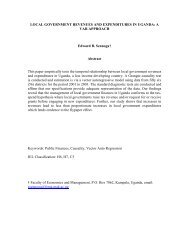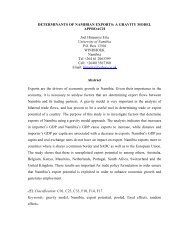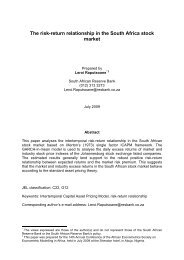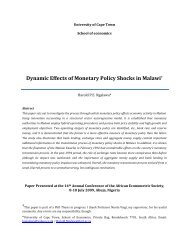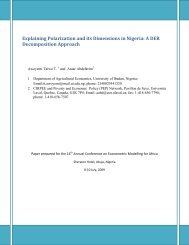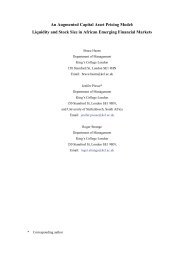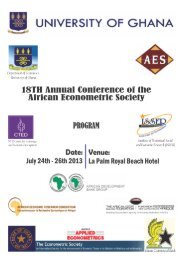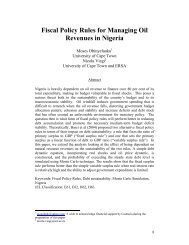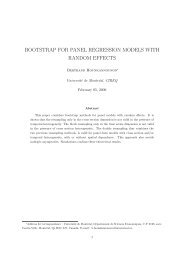The Foreign Exchange Rates in Nigeria - African Econometric Society
The Foreign Exchange Rates in Nigeria - African Econometric Society
The Foreign Exchange Rates in Nigeria - African Econometric Society
Create successful ePaper yourself
Turn your PDF publications into a flip-book with our unique Google optimized e-Paper software.
Auwal and Hamzat<strong>The</strong> models specified <strong>in</strong> (4) is the longrun model of foreign exchange rate regardless of theallocation arrangement used to obta<strong>in</strong> the data. For the purpose of this study we used MRATEfor exchange rate under DAS and IFEMRATE under IFEM .5.0 Results and Conclusions<strong>The</strong> results of the test of a long run relation between exchange rate and the volume of foreignexchange dur<strong>in</strong>g the DAS regime show a significant relationship only when <strong>in</strong>formation onexchange rate <strong>in</strong> the three or previous days are taken <strong>in</strong>to consideration. This is shown <strong>in</strong> table 2<strong>in</strong> the appendix because the coefficient of the lagged dependent variable(MRATEt-1) issignificant at 7.6 %. Table three(<strong>in</strong> the appendix) shows the results of estimation of variables thatsignificantly impact on MRATE. It should be noted ,however, that the fit of the model (35%) isweak. When the differenced terms (<strong>in</strong> table three) are equated to zero, the long run relationbetween exchange rate (MR) and quantity traded (DD) is0.394767MR+t − 44127802 −0.399405DDt−1MR1=1.0117487DDt1= +t −1 −0 ................................(5)111781892 ..........................................................(6)From (6) , it is clear that the rate at which exchange rate under DAS moves towards its long runequilibrium is 1.0117.For IFEM, the results of estimation of the relationship between exchange rate and quantity tradedare shown <strong>in</strong> table for four and five of the Appendix below. <strong>The</strong>se results show long runrelationship between exchange rate and quantity traded does not exist <strong>in</strong> the long run as thecoefficient of the lagged dependent variable (IFEMRt-1) is not significant at 5% not even at 10%level of significance. Table four takes <strong>in</strong>formation about exchange rate <strong>in</strong> the two previous days<strong>in</strong>to consideration while table five takes those of three previous days <strong>in</strong>to consideration.<strong>The</strong> conclusion of the paper therefore is that while long run relationship exist when DAS is theallocative arrangement for foreign exchange market, it however does not exist when IFEM is theallocative arrangement for foreign exchange.9



